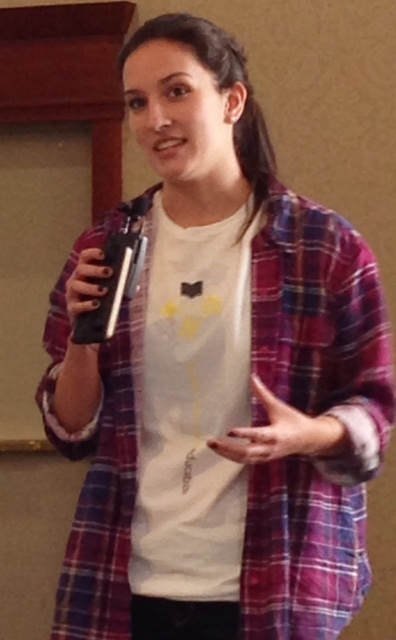Have kids solve Idaho’s greatest challenges. Disrupt for good. Apply the creativity of teenagers to problems created by adults.
Those were the objectives of the 24-Hour Think Challenge.
About 150 Treasure Valley high school juniors defined problems in health, education and life. They listened to experts and gathered information and throughout Thursday and into Friday morning, they brainstormed solutions to childhood obesity, teen suicide and failing schools.
The students were sequestered at CenturyLink Area where they slept atop the ice rink and worked intensely in small groups. Food was more abundant than sleep.

“I didn’t even count hours of sleep, I counted 180 minutes of sleep,” said Isabella Fregoso, a Boise High School junior. “It’s overwhelming and I’m exhausted but this taught us how to approach problems we’re going to face later. I worked with thoughtful and motivated people and we will figure this out.”
Fregoso was one of 60 students who set out to solve Idaho’s education crises. They shared their fresh perspectives with adults on Friday afternoon.
Her group wants to improve high school experiences for students who speak English as a second language.
“They don’t have enough support,” Fregoso told a crowd of 150. “We can build a better community by connecting diversity — create universal students.”
Her group recommended student-mentor programs that can assist students who are learning English, making them feel welcome and an integral part of school life.
Here are highlights of the 11 other ideas presented by students:
1. Inspire teachers to motivate students by having other teachers, students and volunteers observe, critique and evaluate methods and lesson plans. Volunteers would be parents and professionals and they would help teachers come up with new formats and skills so classes can be more creative, organized and relevant. Teachers would be evaluated on a point system and those results would be given to administrators to use.
2. Change the class schedule and curriculum to “think depth, not width.” For example, move to four periods a day instead of eight and make them twice as long, so topics can be explored in greater depth. Regularly survey students and investigate what they are learning. Classes should be student-driven and project-based. “Inspire the students to want to learn,” said Bishop Kelly High School’s Carter Lee. “You have to actually understand to get a good grade.”
3. Make sure education prepares kids for jobs by starting with career exploration classes in eighth grade. Students would be sent down tracks that match their talents and interests and their education would prepare them for the work force, vocational school or college. Online-learning classrooms should have more students and fewer teachers, making it more competitive to get into teaching. Teachers would be mentors and coaches instead of lecturers.
4. Create a “connection platform” that builds caring relationships between students and teachers. This Internet platform would host communication outside of class and would include a news feed, discussion board and suggestion box. Students and teachers could communicate in real time instead of waiting hours on emails or for the next class.
5. Support preschool by having high school kids teach youngsters. The “Under 5 Program” would send high school students to volunteer at a day care and earn service hours toward graduation requirements. It would be inexpensive for the state and students could create lesson plans and mentor each other.
6. Promote lifelong learning with an academy system where students can explore subjects to find out their interests. The academy would include internships and prepare teens for the real world. The academy would narrow a student’s focus and interests.
7. Inform parents and the community to the importance of preschool with a “guerrilla marketing” effort that includes ads on YouTube and Facebook. Inform voters about the benefits of preschool and educate parents about what they can do at home.
8. Connect personal interests to required subjects in a program called “Voyage Ed.” This program would inspire learning by using a personality assessment, then launching into a deep dive into a topic.
9. Keep the best educators in Idaho classrooms by encouraging curricular freedom. Promote independent studies and collaboration between students.
10. Integrate technology in the classroom by keeping teachers up to date with training. Allow and encourage students to mentor teachers with technology, and use technology to promote lifelong learning.
11. Design individualized curricula that connects to the needs of the modern world. Education should be flexible and modern and include communication and collaboration. “It’s surprising how little of that is going on,” said Bishop Kelly student Gabriel Schrag. Encourage students to teach students using a variety of mediums, including hands-on activities. “Students learn best when they get to choose what they want to learn,” he said. “Teachers should push from behind not pull from ahead.”
This event was sponsored by One Stone, a student-led service organization, and the J.A. and Kathryn Albertson Foundation. (Click here, and click here, to read our stories about One Stone.)
Disclaimer: Idaho Education News is funded by the J.A. and Kathryn Albertson Foundation.
